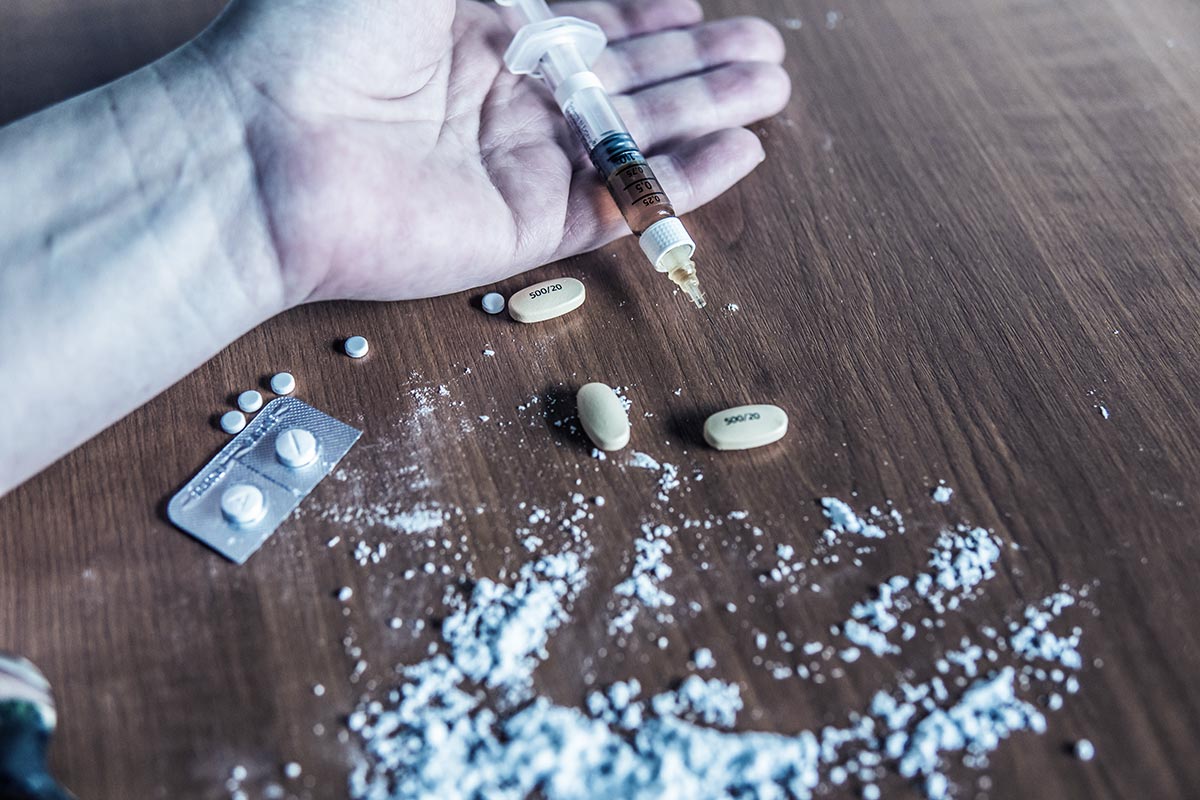Fentanyl is one of the strongest opioid drugs on the market. It also rose to prominence in the United States as a cheap and very strong synthetic opioid on the illicit drug market. Today, fentanyl is responsible for more than 70% of all opioid-related overdoses and is found mixed into faux versions of prescription drugs ranging from morphine tablets to Xanax. That prevalence relates to its ease of synthesis as well as the fact that it’s not always illegal to import precursors to fentanyl. These “precursors” are substances that can easily be manufactured into fentanyl, but are not yet the illegal drug themselves.
That, plus the small size and weight of fentanyl and similar synthetic opioids means it’s easy and profitable to import them to the USA from China or Mexico. However, the increasing crackdown on fentanyl and its precursors means that illicit labs are shifting to new drugs that aren’t yet banned, which means that more and more synthetic opioids are hitting the market.
Many of these are fentanyl analogues, or drugs that are fentanyl derived or so similar to fentanyl as to be describable as an analogue to fentanyl. Others are not, and are known as Non-fentanyl opioids.
Non-fentanyl Opioids
Non-fentanyl opioids are a class of new synthetic opioids that are not related to fentanyl. Of these, Nitazenes are the most common and the most dangerous. Nitazenes are opioid-drugs comprised of a family of very similar drugs including brophine, isotonitazene, metonitazene and N-piperidinyl. During one study, it was found that these drugs are actually stronger than fentanyl. For example, persons being treated for Nitazene overdose required, on average, 3 doses of Naloxone to come out of the overdose. Persons treated for a fentanyl overdose only required 1-2 doses of Naloxone to come out of the overdose. This means that it’s very likely that Nitazenes are more potent or more bioavailable than fentanyl, which means that they are more likely to result in an overdose.
Nitazenes
Nitazenes are the most common of the new non-fentanyl opioid drugs. They’re also one of the most dangerous. In fact, study after study shows that they are more potent than fentanyl, more likely to cause death on overdose, and less likely to respond to overdose reversal medication. This means that even when they have the same overdose potential as fentanyl or are taken in the same dosage, you’re more likely to suffer a bad outcome or to die as a result. Unfortunately, there is no specific way to avoid them, because they are often unlabeled and dealers don’t always know what they are selling.
Nitazenes were also more likely to require cardiopulmonary resuscitation or not to respond to naloxone. In addition, Nitazene users were almost 50% more likely to require intubation as “fentanyl-only” users. Essentially, Nitazene is significantly more potent and more likely to be impossible to reverse from an overdose. In one study, a patient died after receiving 3 doses of Naloxone, meaning that Nitazene is more likely to be deadly. That partially relates to the fact that Nitazene drugs are more likely to cause cardiac arrest, hospitals are less familiar with the drug and therefore less likely to be able to act accordingly, and the drug is less studied, meaning that we know less about how it works and how it interacts with other drugs.
New Synthetic Opioids
In most cases, synthetic opioids show up as a mix of different drugs. People taking synthetic prescription pills don’t know what they are taking because often, the manufacturer mixes different drugs together. In one study, 537 people were admitted for laboratory screening and only 11 were positive for “only” fentanyl and only 9 were positive for only Nitazenes. This means that synthetic opioids are very likely to be mixed together, and often in ratios that you cannot predict or expect.
The largest danger is often that people don’t know what they are taking or when. Many people testing positive for Nitazenes think they are taking prescription painkillers, benzodiazepines, and better-understood opioids like heroin. Unfortunately, dealers don’t even always know what they are selling, which means the dealer may honestly believe they are passing on heroin when they are selling a new and dangerous synthetic opioid.
In addition, many NSO’s are mixed together into what is known as “Frankenstein” opioids. These are typically more than one opioid drug class thrown together, meaning that results, potency, and overdose potential are unpredictable. That may mean they include “classic” opioids like morphine or heroin mixed with fentanyl or another synthetic opioid. It might also mean they’re made up of a cocktail of different synthetic drugs, which means the actual effects and potency of the drug can be almost anything.
Staying Safe
According to the CDC, more than 150 people die every day as a result of synthetic opioids. That number is likely to continue to grow as new, more potent, and less understood opioids hit the market. In many cases, if you or a loved one is taking opioids, even drugs you believe to be prescription pills but which are purchased illicitly, you are putting yourself at risk.
Staying safe ideally means getting treatment and staying clear of using recreational opioids. However, that isn’t always possible and taking intermediate steps to improve the safety of synthetic opioids can save your or your loved one’s life.
- Get drugs tested. Organizations like DanceSafe.org will often test drugs for free so you know what you’re taking, how strong it is, and how to use it safely.
- Carry Naloxone. One dose is no longer enough. If you’re taking synthetic opioids, you may need up to three doses to reverse an overdose. Keep that in mind and carry enough Naloxone.
- Don’t take your last dose of a drug, keep it on you so that if you end up in the hospital, the drug can be tested and you can get appropriate medical care.
- Try to use in safe areas where medical help is available more quickly, e.g., in a government-managed building, with a clean and sober friend, etc.
New classes of opioid drugs will continue to emerge on the market. Today, there are four major synthetic opioids in addition to fentanyl (brophine, isotonitazene, metonitazene and N-piperidinyl). However, that will continue to expand, meaning that new drugs will hit the market. Some of them will be more potent than fentanyl, most will have new and unexplored dangers. This means that staying safe around illicit opioid usage is getting more and more difficult.
Getting Help
If you or a loved one is having difficulty around using opioid drugs safely, it’s important to reach out and to get help. You won’t always be able to safely use opioids. In many cases, the best answer is to stop using them altogether, unless you have a prescription. Often, that will mean intensive therapy, treatment to help you overcome the underlying causes behind substance abuse, and help building coping mechanisms. Unfortunately, while getting mental health help and rehabilitation treatment is always the best option, it’s not something you can choose for other people. If your loved one isn’t ready to go to treatment yet, it’s still important to take steps to ensure you’re using as safely as possible. While there is no safe way to use synthetic opioids outside of a prescription, taking steps to test those drugs, to carry naloxone, and to ensure you’re using in as safe of ways as possible will help to keep you safe until you are ready to quit.




